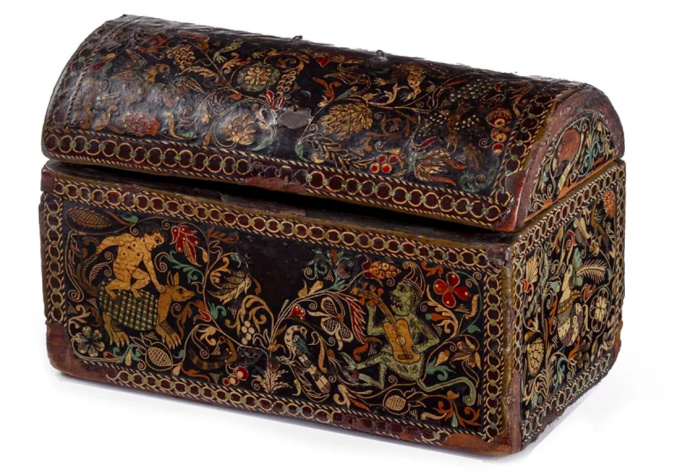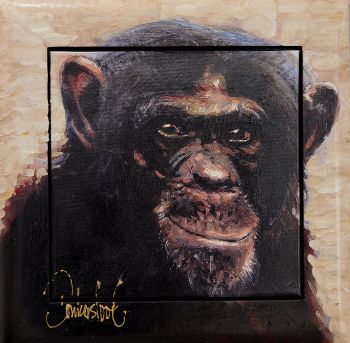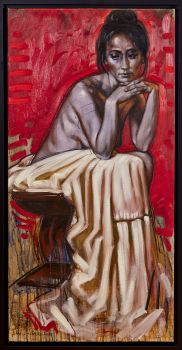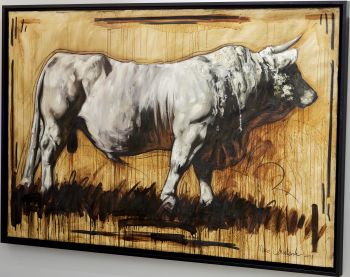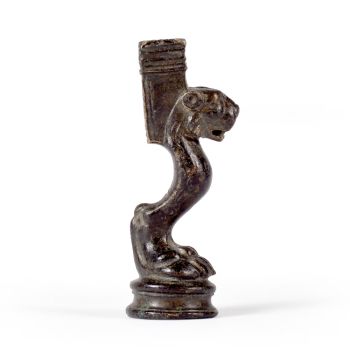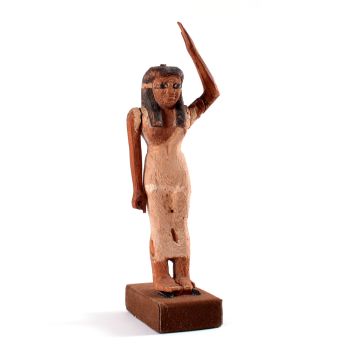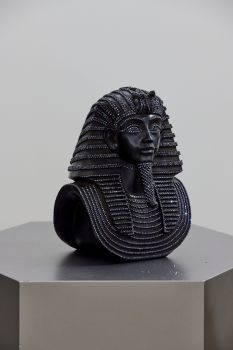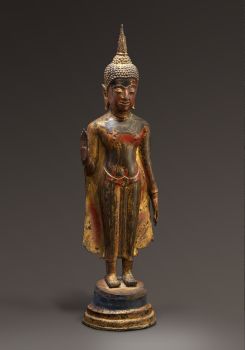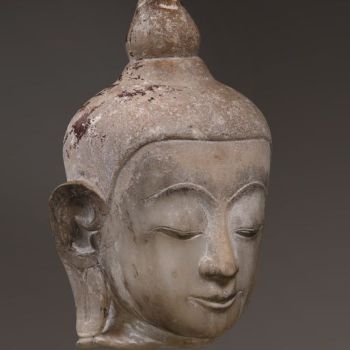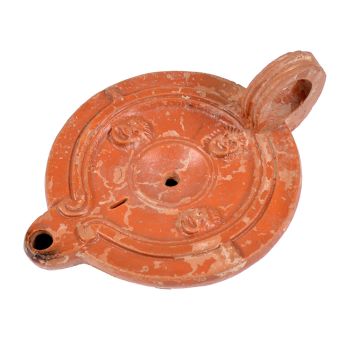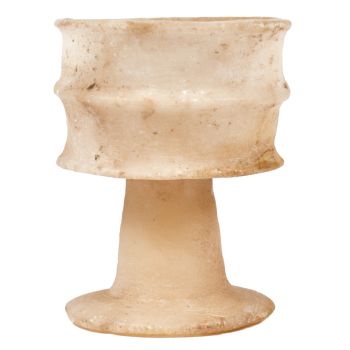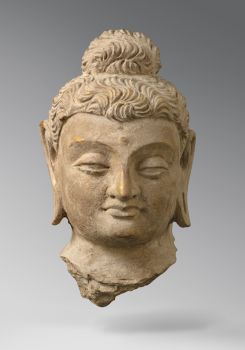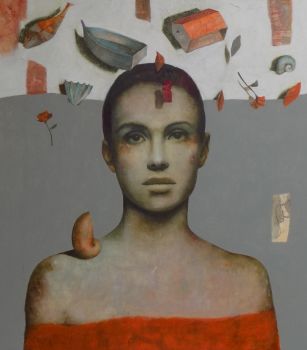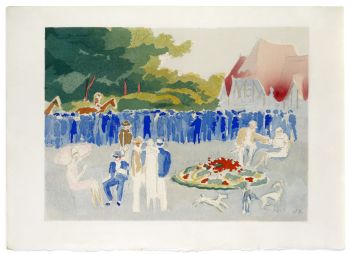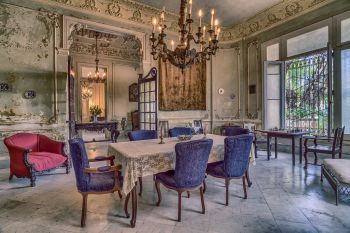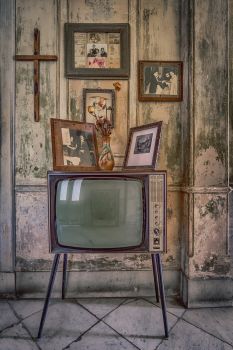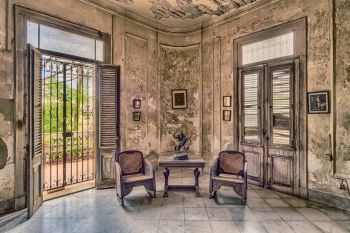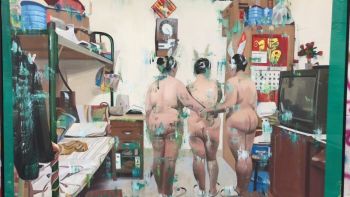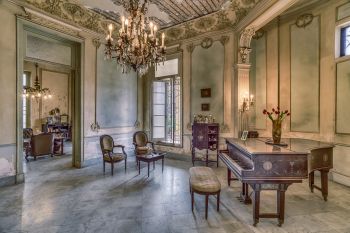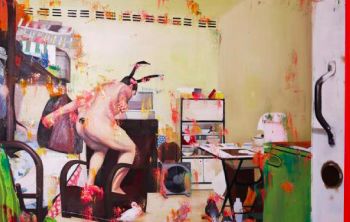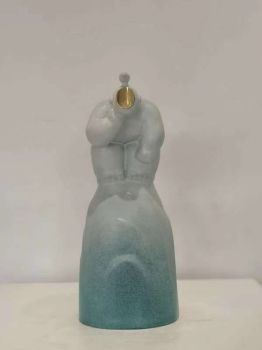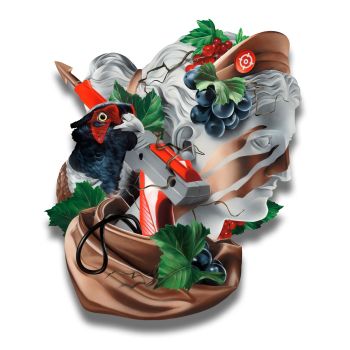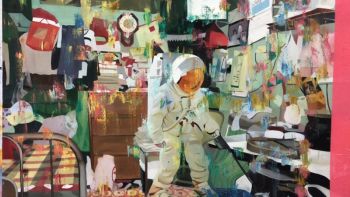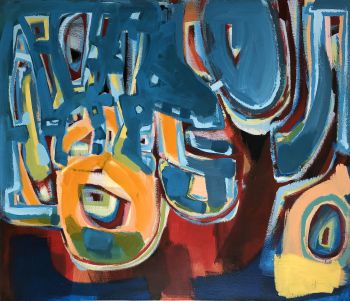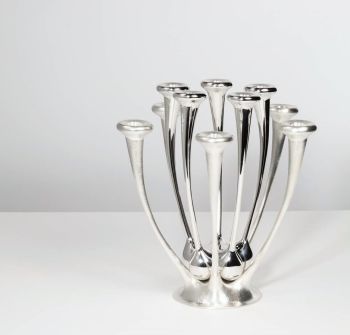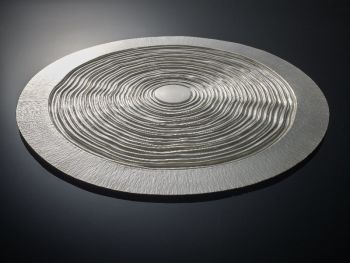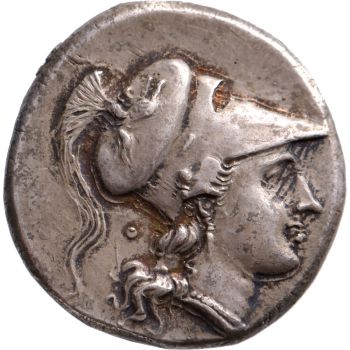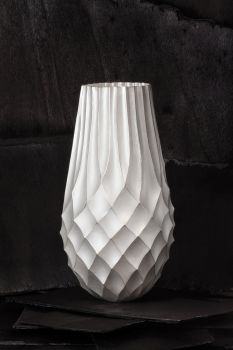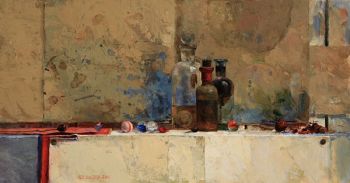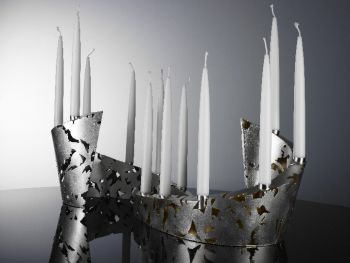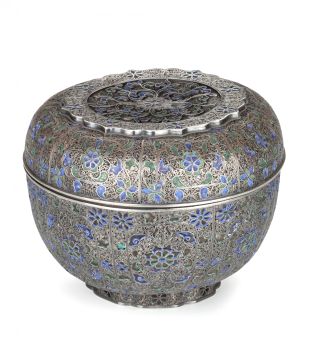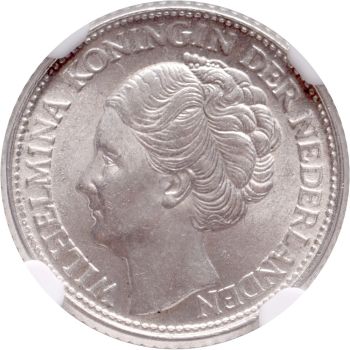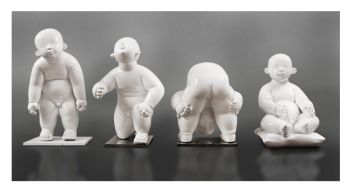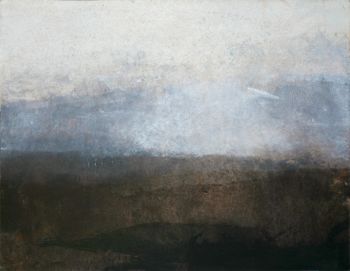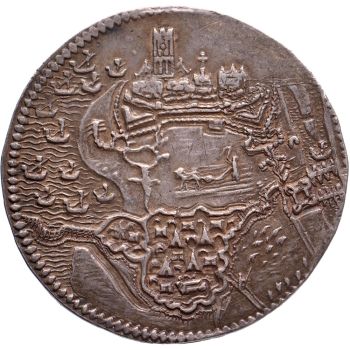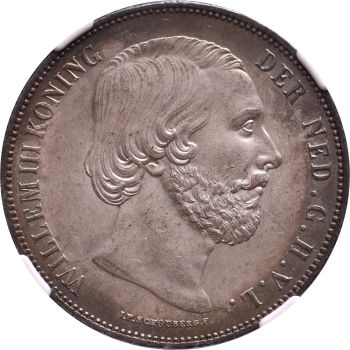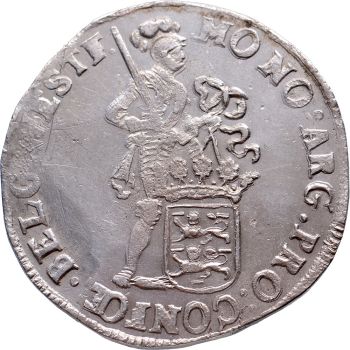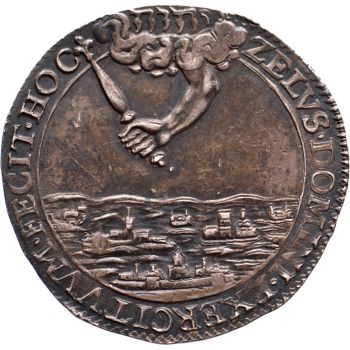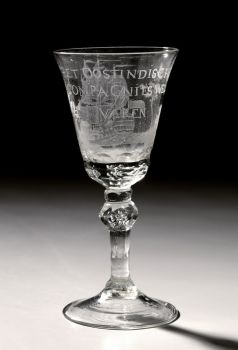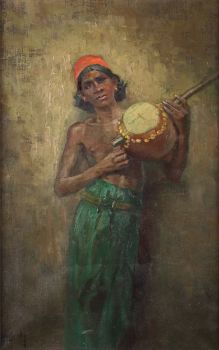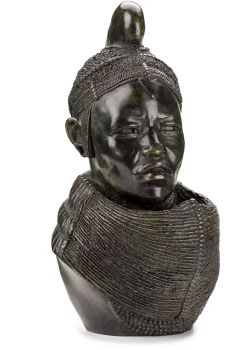An important Spanish colonial Barniz de pasto lacquer casket 1626 - 1650
Onbekende Kunstenaar
ZilverLak
8 ⨯ 13 ⨯ 6 cm
Momenteel niet beschikbaar via Gallerease
Zebregs & Röell - Fine Art - Antiques
- Over kunstwerkAn important Spanish colonial Barniz de pasto lacquer casket with the Jesuit IHS monogram and silver mounts
Colombia, 1625-1650
L. 13.3 x W. 6.9 x H. 8.4 cm
The surface of the casket has been richly decorated in colourful barniz de pasto lacquer. The subject matter of the decoration involves, at the front; a boy riding a fantasy animal, a monkey with a human face and a bonnet playing the guitar, at the back; a predator catching a rabbit, another animal with a human face wearing a bonnet, at one side; a human figure coming out of a horn-shell, at the other side; a bird coming out of a horn-shell, the lid with two lions and all over, various birds among scrolling vines with exotic flowers and leaves. The inside of the lid is decorated with the monogram IHS, an abbreviation of the name of Jesus Christ, with a cross, and a heart pierced by three nails. This symbol was adopted by Ignatius of Loyola as general of the Jesuit Society of Jesus. Lock missing.
The indigenous lacquer traditions in Mexico and Colombia started because the demand in Spain and Spanish America for expensive Asian lacquerware exceeded the supply brought from Asia to Acapulco on the Manila galleons. Therefore, artisans in Mexico and Colombia began to apply their skills to the production of local lacquerware.
Barniz de Pasto is a lacquer-like technique made of plant extract, called mopa mopa, a translucent pale green natural sticky resin applied to wood. Mopa mopa is obtained from the garbanzo-bean-sized leaf buds of the mopa mopa tree (Elaegia pastoenis Mora), native to the tropical rain forests of southwest Colombia. The indigenous people of the Sibundoy Valley supplied the resin-covered leaf buds, pressed into blocks, to the lacquer artisans in Pasto. The long process of working the raw mopa mopa began with removing all impurities, then small amounts of the gummy resin were chewed or boiled in water to make it sufficiently elastic to stretch it into thin sheets by pulling in opposing directions by hands and teeth. Finally, the very thin sheets were applied with heath to a wooden object. The resulting layer provided an exceptionally durable, waterproof surface, impervious to most organic solvents and ready to be decorated.
The naturalist-explorers Jorge Juan and Antonio de Ulloa visited Pasto in 1740 and remarked that barniz de Pasto ‘rivalled the best Asian lacquers in its colours’ beauty, shine, and durability.’ - Over kunstenaar
Het kan voorkomen dat een kunstenaar of maker onbekend is.
Voor sommige werken is het niet te bepalen door wie het gemaakt is of dat het is gemaakt door (een groep) ambachtslieden. Voorbeelden zijn beelden uit de Oudheid, meubels, spiegels of handtekeningen die vaak niet duidelijk of leesbaar zijn. Maar ook sommige werken zijn helemaal niet gesigneerd.
Ook kunt u de volgende beschrijving vinden:
•"Toegeschreven aan …." waarschijnlijk een werk van de kunstenaar maar niet zeker of gedeeltelijk
•“Atelier van ….” of werkplaats van” een werk uitgevoerd in het atelier of atelier van de kunstenaar, eventueel onder zijn toezicht
•“Cirkel van ….” een werk uit de periode van de kunstenaar die zijn invloed laat zien, nauw verbonden met de kunstenaar maar niet noodzakelijkerwijs zijn leerling
•“Stijl van ….” of “Volger van ….” een werk uitgevoerd in de stijl van de kunstenaar, maar niet noodzakelijk door een leerling; kan eigentijds of bijna eigentijds zijn
•“Wijze van ….” een werk in de stijl van de kunstenaar maar van latere datum
•"Na …." een kopie (van welke datum dan ook) van een werk van de kunstenaar
•“Getekend…”, “Gedateerd….” of “Ingeschreven” dan is het werk gesigneerd/ gedateerd/ ingeschreven door de kunstenaar. De toevoeging van een vraagteken duidt op een element van twijfel
•"Met handtekening ...", "Met datum ...", "Met opschrift..." of “Draagt signatuur/datum/opschrift” dan is de handtekening/datum/opschrift toegevoegd door iemand anders dan de kunstenaar
Bent u geïnteresseerd om dit kunstwerk te kopen?
Artwork details
Related artworks
- 1 - 4 / 12
Onbekende Kunstenaar
A silver spoon commemorating Juff’ Margareta van Hoorn1656 - 1694
Prijs op aanvraagZebregs & Röell - Fine Art - Antiques
Onbekende Kunstenaar
Japanese transition-style lacquer coffer 1640 - 1650
Prijs op aanvraagZebregs & Röell - Fine Art - Antiques
Onbekende Kunstenaar
A Surinam-themed Amsterdam long-case clock1746 - 1756
Prijs op aanvraagZebregs & Röell - Fine Art - Antiques
 Gecureerd door
Gecureerd doorGallerease Magazine
Onbekende Kunstenaar
AN UNUSUAL INDONESIAN LOBBED SILVER DISHlate 17th
Prijs op aanvraagZebregs & Röell - Fine Art - Antiques
1 - 4 / 21Onbekende Kunstenaar
The bell of the VOC fortress in Jaffna, Sri Lanka1747
Prijs op aanvraagZebregs & Röell - Fine Art - Antiques
 Gecureerd door
Gecureerd doorDanny Bree
1 - 4 / 16- 1 - 4 / 24
Onbekende Kunstenaar
Japanese transition-style lacquer coffer 1640 - 1650
Prijs op aanvraagZebregs & Röell - Fine Art - Antiques
1 - 4 / 24Onbekende Kunstenaar
EEN VERGULD-ZILVER SRI LANKAANSE DOCUMENTEN ROLCONTAINER19th century
Prijs op aanvraagZebregs & Röell - Fine Art - Antiques
Onbekende Kunstenaar
An Indian part-gilt silver-clad ceremonial sceptre or mace with a tiger’s head1850 - 1900
Prijs op aanvraagZebregs & Röell - Fine Art - Antiques
 Gecureerd door
Gecureerd doorDanny Bree
HUGO VILFRED VON PEDERSEN
Gadesanger fra Singapore (Musician from Singapore)1870 - 1959
Prijs op aanvraagZebregs & Röell - Fine Art - Antiques
Onbekende Kunstenaar
EEN JAPANS MODEL VAN EEN NORIMONO, EEN DRAAGSTOEL1650 - 1700
Prijs op aanvraagZebregs & Röell - Fine Art - Antiques
Onbekende Kunstenaar
AN IVORY NETSUKE OF A DUTCHMAN FROLICKING WITH A SMALL BOY18th century
Prijs op aanvraagZebregs & Röell - Fine Art - Antiques
1 - 4 / 12

